Someone finally capitulated on my long wish to explore the rice terraces in Batad.
I know you’re not into rice paddies, so huge thanks for not being a spoilsport on this punishing trek.
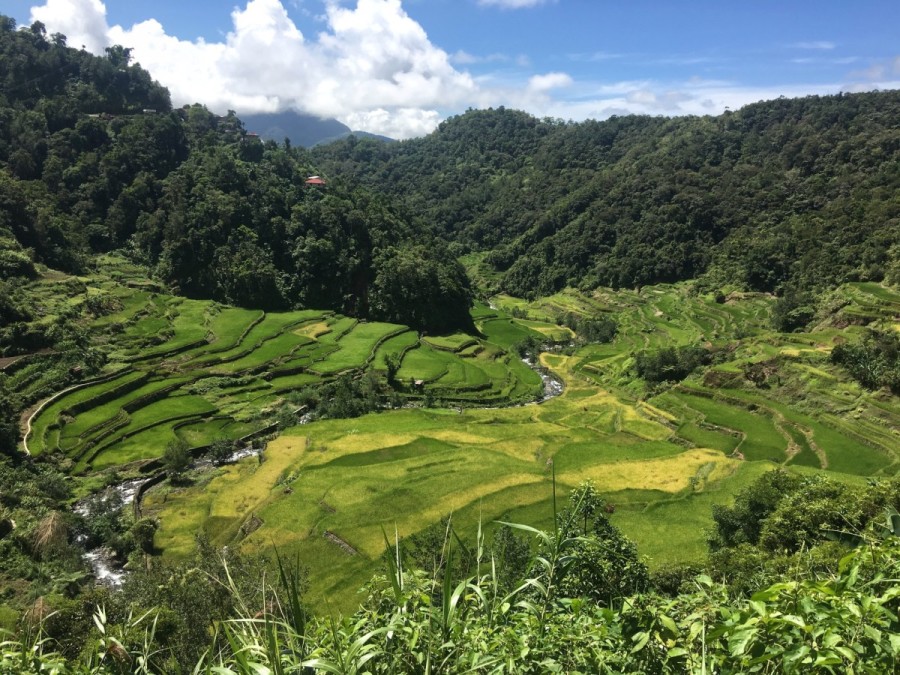
Ifugao is home to highland people, also called Ifugao. They developed a fascinating culture of growing rice by carving terraces out of a mountain.
They are gigantic. Green during summer. They turn golden throughout the harvest season from June to early August . And in the barren months till the next planting season, they reflect the mood of the sky blanketing above them. Such wonder!
How to get to Batad?
Batad is accessible from Banaue town by hiring a tricycle or for larger groups, a jeepney.
By tricycle. The 45-minute tricycle ride costs P800 with return trip. Mind that local drivers will usually introduce the fare for P600 but will somehow add P200 for waiting time.
By jeepney. You can opt to go by public jeepney. There is one trip going to Batad in the morning and another going back to Banaue in the afternoon. Ask tourist information when you arrive in Banaue as soon as you register for an updated schedule. Note that the vehicle needs to be full (almost always to the brim), that includes top load, before they depart.

Banaue town proper to Saddle Point. The road from Banaue to the jump-off point to Batad called Saddle Point, is paved with concrete now. Landslides are still inevitable in the rainy season. Some parts of the road can be blocked off completely or can only be used by one vehicle at a time.
If you’re not used to driving on mountains, it can be nerve-wracking. The height alone here might cause that queasy feeling in the pit of your stomach.
Some parts of the road are rather narrow. One turn in the wrong direction could send you plummeting off the edge and not live to tell the tale.
I held back the urge to ask our driver to slow down a bit, though it felt like he was on a race in Need for Speed. I noticed he resisted the temptation of zooming down a hill. That was a relief.
Saddle Point to Batad village. From the Saddle Point, the path is pretty straightforward going down to Batad village. If you haven’t got a guide with you, you won’t get lost. Not even if you want to.
Should I hire a guide to trek Batad?
If you only want to explore the cluster of terraces that form like an amphitheater, then definitely no.
There really is no need. You can pretty much see point A to point B. Even the trail to Top View is extremely easy. I meant easy in the sense of direction. How you haul yourself up there is another story.
On the other hand, if you want to hike up to Awa View Deck, then yes, take a guide with you.
The trail takes you deep into the valley and there are no locals around to point the way nor did I see any signs along the trail.
Guide fee depends on the trail, of course. Generally, you would shell out around P600 to P1200 given a combination of trails for a day trek in Batad.
If you do decide to trek to Awa View Deck, best to start early to avoid the hottest part of the day. We hiked up there at noon and it was a near disaster.
Where to stay in Batad?
As we decided to stay in Banaue, I am not really someone who could recommend somewhere to stay in Batad.
But if I were to choose a place there, Hillside Inn would be top in my list.
Their restaurant offers HD View of the rice terraces you see in postcards sold at souvenir shops.
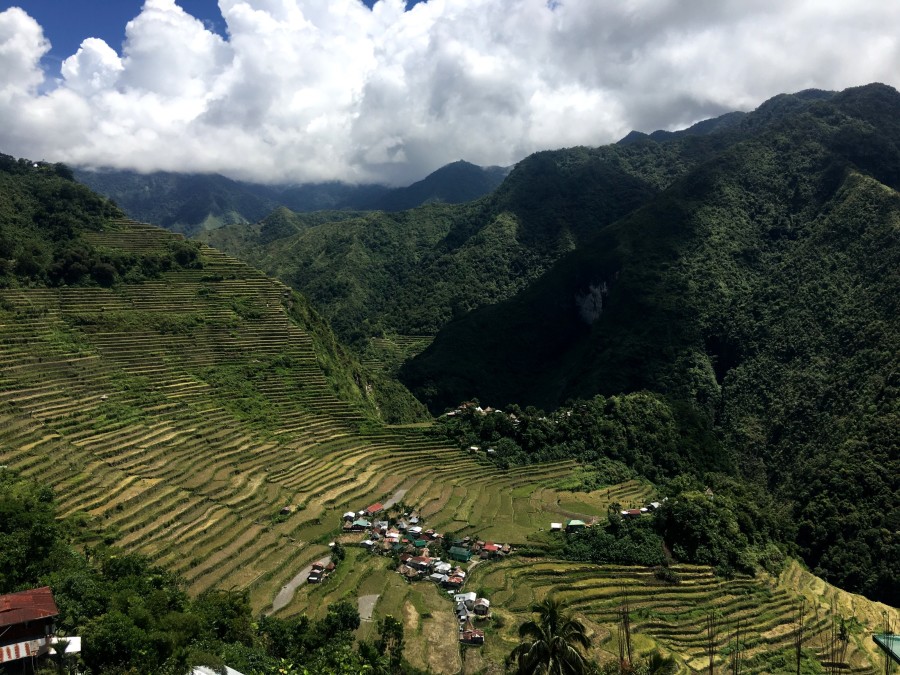
Below are some stories of our trek in Batad
Buy a walking stick. After breakfast at Banaue Hotel (they were great to allow us an early check-in), we took a tricycle to Batad. Almost an hour after, we reached the Saddle Point. From there, we bought walking sticks. I would strongly suggest you get a sturdy walking stick. Or your knees alone would take a pounding on the gazillion steps in the terraces. Have pity on your knees.
Visit in August for the harvest season. August is nearly end of the harvest season in this part of the Ifugao province. From what I gathered from a local, they only plant rice once a year these days. Harvest the crop around June to July. Repair the terraces after harvest season and prepare them again till the next planting season.
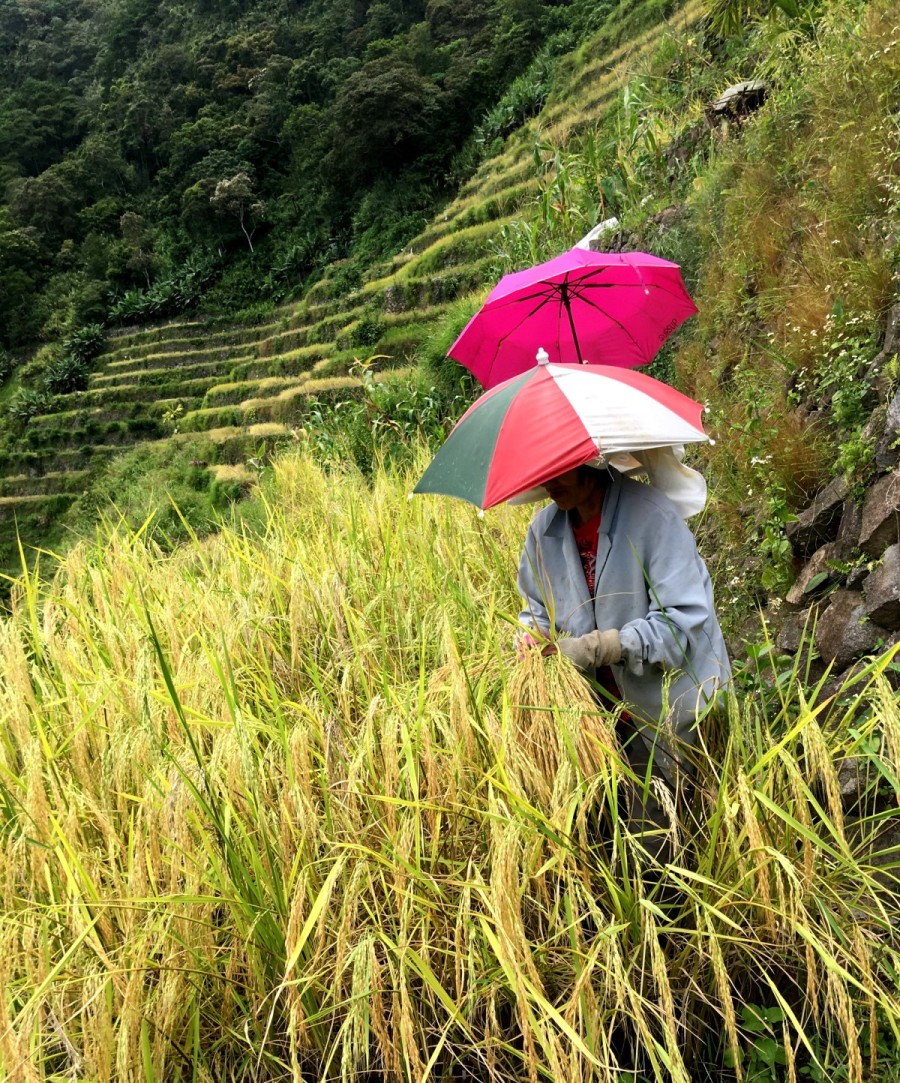

Listen to the sound of the Ifugao drum. You can hear somewhere in the village a local banging his drum thanking the gods for a good harvest. The beat is slow and steady. I thought it has the same rhythm I heard when we were in Sagada during the Etag Festival.
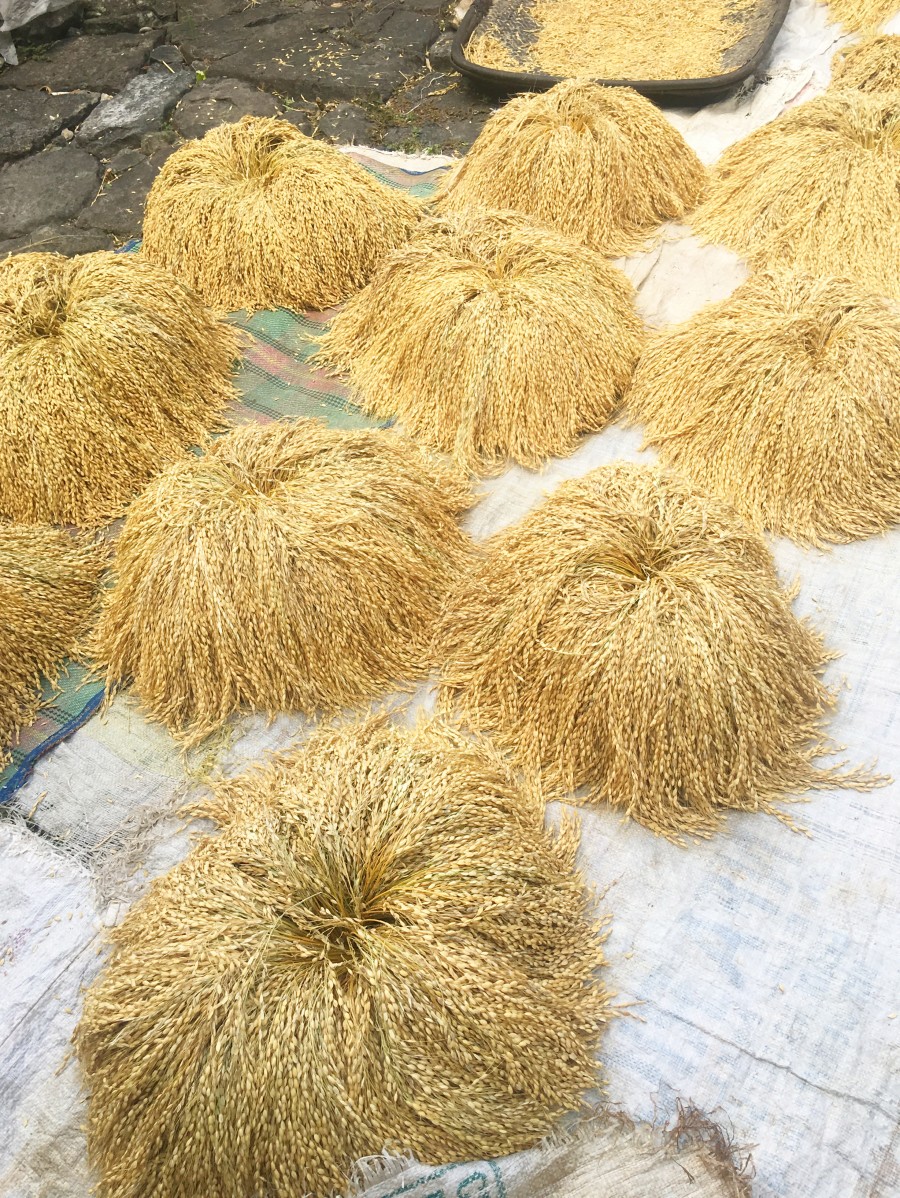
Learn how to separate rice grains from their stalks the traditional way. Since, I haven’t seen any simple machines, let alone complex ones, to help them separate the grains from their stalk, I asked a local how they do it. They simply make bunches, let it dry out in the sun, and then beat the hell out of them until the rice grains come loose. And by the way, did you ever wonder if they use carabao (water buffalo) to plow the field? I did. And yes, they do. Which begs the question, how does one take a carabao to walk up and down those rice terraces? Good question.
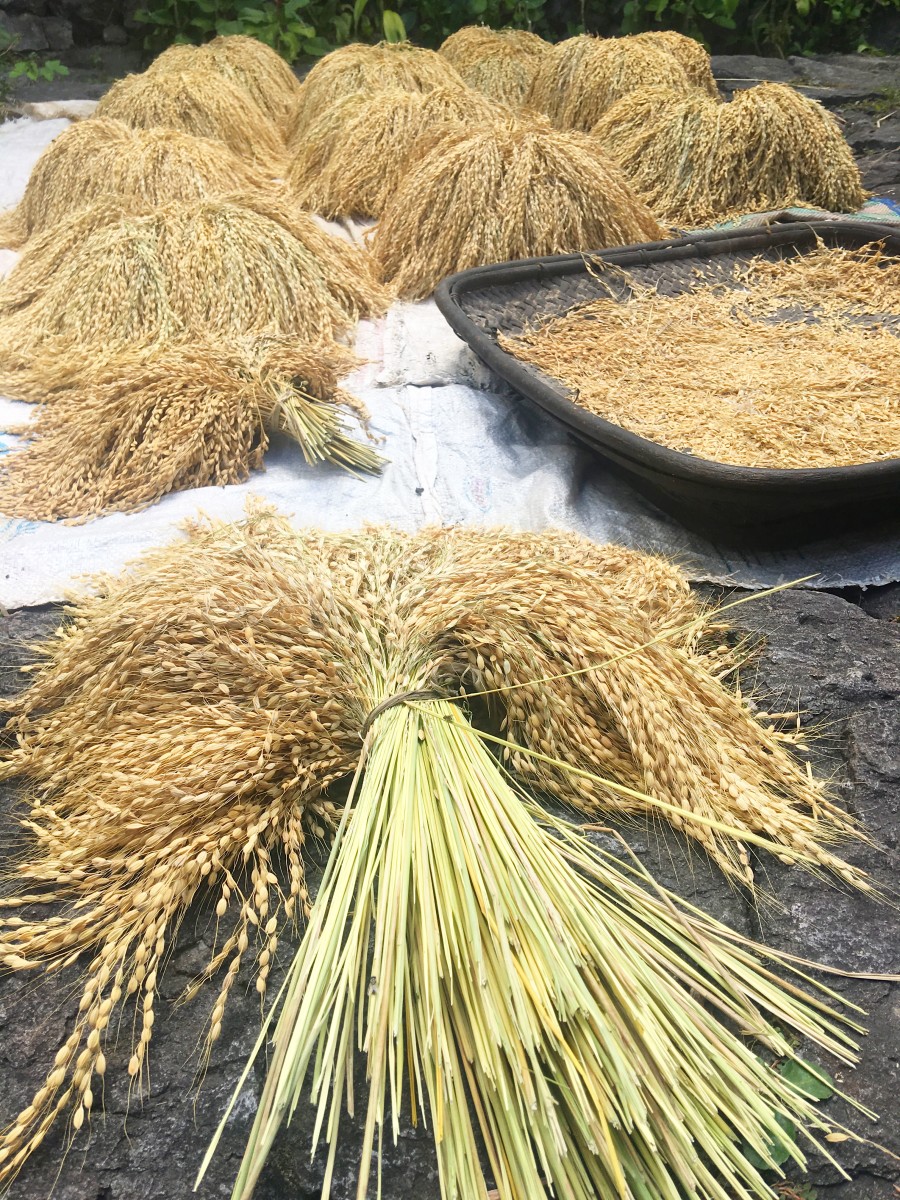
Planting rice and harvesting them by hand certainly take an insane amount of work.
Treks in Batad
Batad is made for trekking. Plenty of options to choose from short and easy treks to multi-day hikes. We opted to miss Tappiya Falls as we have been to lots of waterfalls already. But, I heard it’s really worth the hike.
Trek to Awa View Deck. The guide didn’t warn us about the trail. Although to his credit, he did inform us that it was far. Looking back, it wasn’t really about the distance. It was more a combination of several factors that made the hike disastrous.
We were almost halfway when I called a halt and decided for us to turn back. We were taking too many rest stops within a short period of time. I didn’t want to become a liability in this remote mountain area. It was almost noon and the heat just became unbearable. Compounding the situation was the almost 90 degrees assault to the top without trees to shade us from the sun. The trek spells disaster right from the start.
I was never more glad to see the familiar village again on our way back.
Lunch at Foreigner’s Inn. We didn’t have enough strength to hike up to Hillside Inn restaurant where we pre-ordered our meal. So, we chose the first restaurant we saw. Our plate of rice mixed with veggies and tuna paired with their ice cold Coca-Cola was the best thing I had that day.

Trek to Top View. After our lunch siesta, the sky darkened. It was a definite warning to make tracks for Banaue. But if we hurry we could still make it to Top View and back before the downpour.

These stone stairs need your full concentration because one step out of line could send you hurtling down to the paddies below.
The terraces are about 12 feet apart.
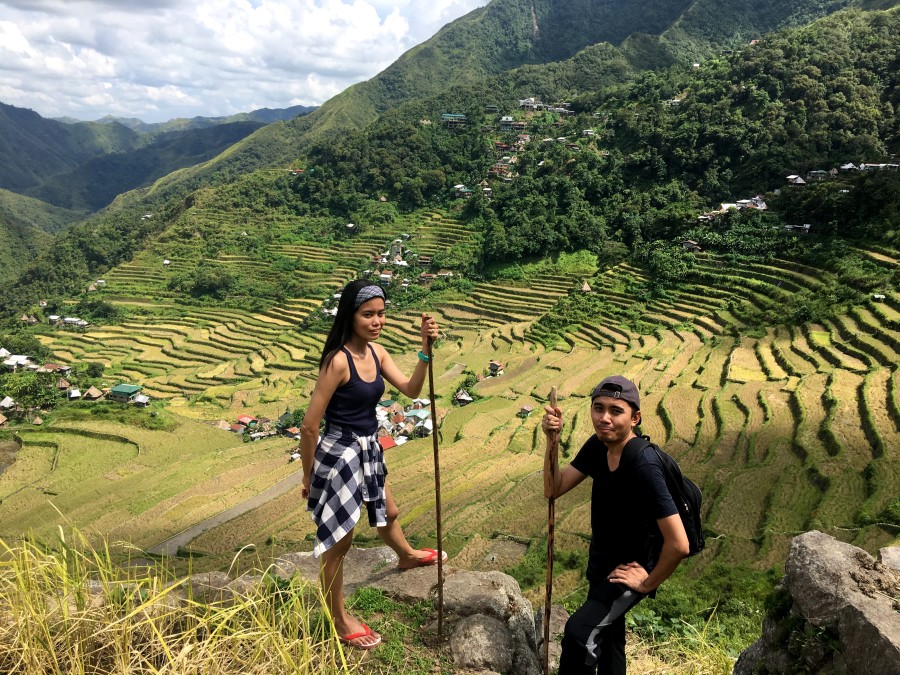
Whoever said hiking Batad is no joke, take his word for it.
Ascending stairs is undoubtedly one of the toughest type of trekking. The struggle is real.
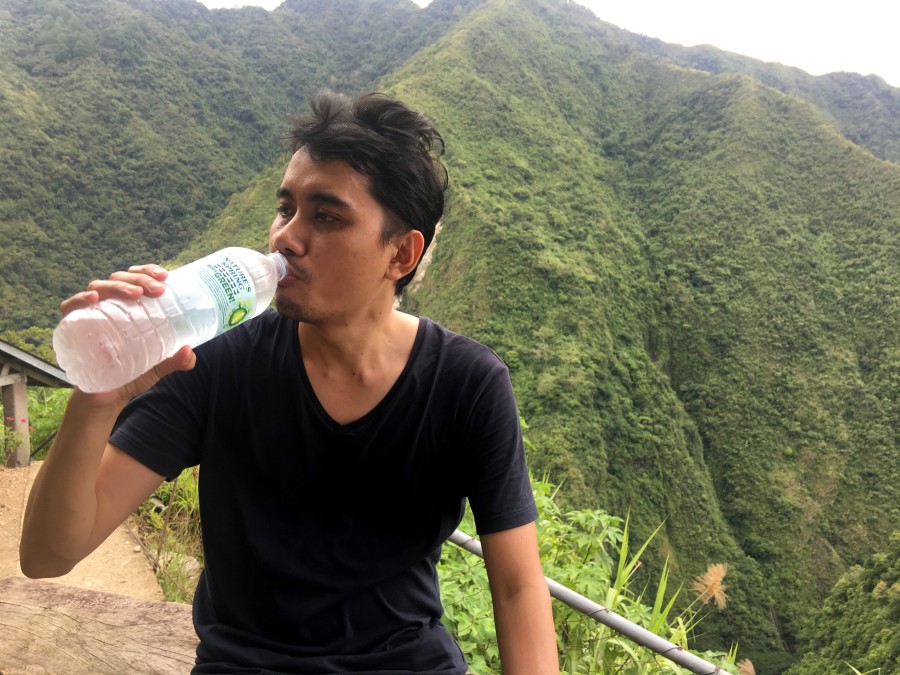
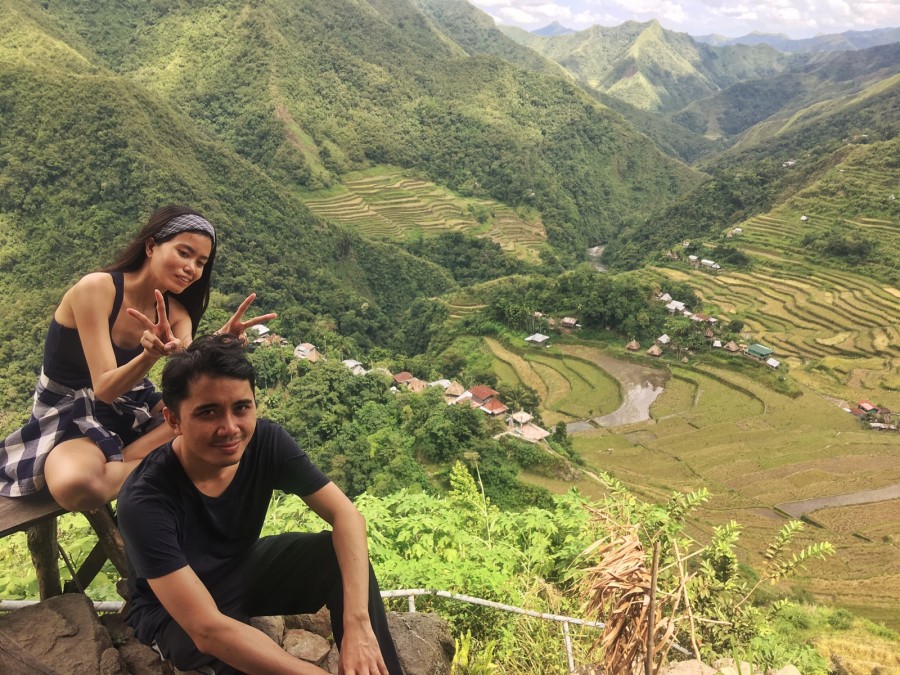

This side of the mountain has to be my favorite view in Batad.
I kept looking at this spot as we circled our way back to town.
Yes August is rainy season. True to the season, it started to rain when we arrived at the Saddle Point and came pouring down hard all the way to Banaue.
To my delight, it was a hot chocolate weather that night.

Thanks again hubby for rice stalk-ing Batad with me!

